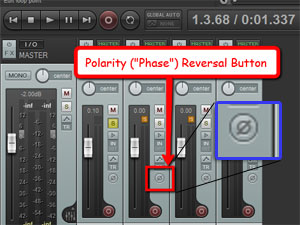The high energy of a live performance is irresistible to a producer. Getting the emotion and excitement of vocals to show through in a studio recording can be difficult, especially after several takes in the sometimes clinical environment of a sound booth. Getting it right the first time is the only choice with a live recording, so take your time with equipment selection and setup to avoid making extra work for yourself for after the show.
You can read the full article here: http://www.prosoundweb.com/article/capturing_the_moment_microphone_approaches_for_live_recording/
Live Sound
Benefits Of In-Ear Monitors
Different brands and styles of in-ear monitors each have their strengths and weaknesses, but in general they tend to be a net positive. Some of the very basic models are quite affordable, and as with most other electronics the sky is the limit for the upper end of the price range. By selecting the right product based on your individual needs, you can avoid ending up with a product that doesn’t suit your needs.
You can read about some specific models here: http://www.prosoundweb.com/article/in_ear_monitors_and_what_you_need_to_know/
Using The Polarity Switch To Optimize Live Drum Sound
 Most mixers have a switch on each channel that will reverse the polarity (often referred to as “phase,” which is not technically correct). To understand polarity, remember that sound happens in waves caused by air moving back and forth – away and toward a microphone. When a blast of air comes toward a microphone, a positive bit of air pressure is picked up. When, an instant later, the wave moves back away from the mic, you get negative pressure picked up. What the polarity switch does is flip them – a positive pressure becomes negative, and vice versa.
Most mixers have a switch on each channel that will reverse the polarity (often referred to as “phase,” which is not technically correct). To understand polarity, remember that sound happens in waves caused by air moving back and forth – away and toward a microphone. When a blast of air comes toward a microphone, a positive bit of air pressure is picked up. When, an instant later, the wave moves back away from the mic, you get negative pressure picked up. What the polarity switch does is flip them – a positive pressure becomes negative, and vice versa.
One very common use for this switch is when you use 2 mics on a snare drum, one on the top and one on the bottom. When the snare drum is hit, the skin moves in and away from a mic that is pointing at the top drum skin – a negative polarity. That same hit causes the bottom head to move outward – toward the bottom mic – a positive pressure. When these two bits of sound wave are put together in the speakers, one will push the speaker out and one will suck it in. So certain frequencies will be negated in that transaction. So it’s almost automatic for mix and live engineers to flip the polarity on the bottom mic so that the drum hit causes both heads to be negative and they will add together instead of subtract audio. This usually results in a better sounding drum with more low-frequency punch.
In this article by Dave Rat, he talks about the use of the polarity switch – when to reverse it and when not to – in order to get a great drum kit sound. Though it is in the “Live Sound” section of the Pro Sound Web Site), the article doesn’t mention it explicitly, but since he mentions the polarity in conjunction with drum monitor speakers, it’s pretty clear he’s talking about the drums in a live music situation. See the full article below:
Article for polarity for drums
Using Stereo On Live Performance Speakers?
Since stereo sounds so good on recorded music – we wouldn’t THINK about not creating a stereo mix for recordings – it seems like we should also try for stereo when playing live, right? Well that may or may not be true. But if you think about it, recorded music is almost always listened to when were are close to, and between both speakers – in headphones, over car speakers, on docking stations, home entertainment centers, etc. But at a live concert, there will be folks NOT between the speakers at all, so they might only be able to hear the stuff mixed into one of the L/R channels (not good).
Here’s an article that talks about the pros and cons of trying to use stereo for live sound.
Simple But Oft-Overlooked Live Performance Checks
Often, very often, the things that cause technical problems in both recording and live recording situations are very simple. Things like forgetting to turn on phantom power when recording with a condenser mic, or forgetting to arm a track for recording. For live performances it’s often things like forgetting to make sure all the inputs on the PA mixer are turned up. Admit it, you’ve probably seen this in very professional performances when the 2nd or 3rd person to speak or sing gets a line or two into their part before their mic gets turned up or on.
I can’t tell you hoe many times my wife has told me to “make a checklist” every time something like this happens. I still haven’t done it, mainly because these things seem so obvious that putting them on a checklist seems ridiculous. But they work.
Here is a post – coming from a church sound perspective, but the topic applies equally to any live situation – about this very situation:
http://www.prosoundweb.com/article/church_sound_sometimes_its_the_simple_things_that_matter_most/